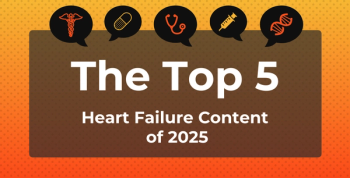
Women Reporting High HIV Stigma Had Higher Odds of Reduced Treatment Adherence
Key Takeaways
- High stigma levels correlate with lower ART adherence and viral suppression in women with HIV, especially those who inject drugs.
- The study used data from the WIHS, focusing on stigma's impact on HIV treatment adherence and health outcomes.
High stigma due to HIV was also associated with depression and drug use, making the reduction in stigma vital for improving the care of women with HIV.
Women with
Antiretroviral therapy (ART) is an effective method of treating individuals diagnosed with HIV, capable of reducing their viral load to increase their health outcomes and prevent the spread of HIV after achieving viral suppression. However, this treatment is only as effective as it is if adherence remains high, which has struggled under disparities
The study used the Women’s Interagency HIV Study (WIHS) for data on the cohort included. The WIHS includes data on women with HIV and similar women without HIV living in the US since 1994 and has since been incorporated into the Multicenter AIDS Cohort Study/WIHS Combined Cohort Study. Women are invited to join the cohort through outreach at clinical sites and community studies. Data from April 1, 2018, and September 30, 2019, from the Bronx, Brooklyn, Chicago, San Francisco, Los Angeles, Washington D.C., Atlanta, Chapel Hill, Miami, Jackson, and Birmingham were used for this study.
All participants had data on HIV treatment, mental health, substance use, and stigma as part of the WIHS through a questionnaire semiannually. Viral load was also tested every 6 months. There were 3 visits used to gather data and participants did not have to attend all 3 to be included in the analysis. All participants were asked if they had felt discriminated against in the last 12 months based on race or ethnicity to measure stigma. Participants were also asked to report their own adherence to HIV treatment and took surveys to measure their mental health.
There were 1407 participants of the study who were included in this analysis, of which 73% were non-Hispanic Black, 10% were non-Hispanic White, and 5% were Hispanic. A total of 55% of the participants were Black women who do not use drugs, 20% were Black women who use drugs, 18% were non-Black women who do not use drugs, and 7% were non-Black women who use drugs.
The women were separated into groupings of those who faced a high level of stigma (3%), a low level of stigma (86%), and anticipated stigma (11%) in health care. The high stigma profile was made up of more Black women who use drugs (32% vs 19%), non-Black women who use drugs (15% vs 6%), any drug use (47% vs 25%), enrollment in an opioid treatment program (12% vs 3%), and suboptimal adherence to ART (27% vs 14%) when compared with the low stigma group. Women who were unemployed, used cannabis or noninjectable drugs, and had clinical depression were more often in the high-stigma group.
Depression was found to be linked with being in the anticipated stigma group (adjusted OR [aOR], 2.00; 95% CI, 1.30-3.09) and the high stigma group (aOR, 2.94; 95% CI, 1.25-6.95). The high level of stigma group also had women with high post-traumatic stress disorder at baseline (OR, 5.47; 95% CI, 1.37-21.83). Suboptimal adherence was lowest in those who were in the low stigma group (OR, 0.46; 95% CI, 0.22-0.96) compared with the high stigma group.
There were some limitations to this study. Current trends in women with HIV may not be accounted for based on all data coming from 2018 to 2019. Causality and temporal changes can not be determined due to the cross-sectional nature of the study. Unmeasured confounding factors are possible and could have affected results. The high-stigma group had a lower percentage of participants, which should prompt further research. Social inequality was not accounted for and stigma surrounding substance use was also not measured. Different kinds of stigma experienced by Hispanic and Black women were not separated. Self-reported data was used for measurement of adherence, which could have affected the accuracy of the measurements.
“Findings from this study highlight that stigma in health care settings functions as a barrier to HIV treatment and care, particularly for women who face multiple layers of marginalization,” the authors concluded. “…To optimize viral suppression across these subgroups, efforts must prioritize decreasing stigma through cultural norms shifts and reducing structural barriers to HIV care.”
References
1. Jain JP, Lisha NE, Sevelius J, et al. Latent healthcare stigma profiles and their association with human immunodeficiency virus (HIV) treatment and care outcomes among women with HIV in the United States: an intersectional analysis. Open Forum Infect Dis. 2025;12(8):ofaf414. doi:10.1093/ofid/ofaf414
2. HIV treatment adherence. HIVinfo.NIH.gov. Updated January 13, 2025. Accessed August 14, 2025.
Newsletter
Stay ahead of policy, cost, and value—subscribe to AJMC for expert insights at the intersection of clinical care and health economics.







































